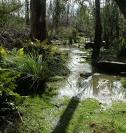/regions/andhra-pradesh
Andhra Pradesh
Consultative Meet on Small, Marginal and Tenant Farmers in Agriculture, Hyderabad
Posted on 19 Apr, 2010 09:00 AMConsultative Meet on Small, Marginal and Tenant Farmers in Agriculture, 20th and 21st May at Hyderabad, Andhra Pradesh.
Pl find attched the concept note, brochure and registration format.
An innovative way of sharing diminishing groundwater introduced by APDAI
Posted on 27 Mar, 2010 12:55 PM“We no longer worry about the rains. We now have the confidence to grow alternative crops even if the monsoon fails,” said Balaraju, a farmer in one of the most drought-prone and economically vulnerable regions of Andhra Pradesh in southern India.
Barrages as a better alternative to Polavaram dam project
Posted on 20 Mar, 2010 06:34 PMBARRAGES AS A BETTER ALTERNATIVE TO POLAVARAM DAM POJECT
(Replies to Discussion Report of Advisory Committee on alternate proposals made for
Polavaram project by Sri.T.Hanumantha Rao, former Engineer-in-Chief, AP State)
Contest to mark World Wetlands Day organised by WWF in Vijayawada
Posted on 02 Feb, 2010 03:19 PM

VIJAYAWADA: School children will be with one another to list the number of animals and plants they can recognise in a competition being held by the World Wildlife Fund (WWF) and the Forest Department at Kaikaluru on Tuesday.
Monthly magazine-Dams, Rivers & People, Sep-Oct 2009, Oct-Nov 2009, Dec 2009 - Jan 2010
Posted on 25 Jan, 2010 12:56 PM
Barrages would prevent Polavaram dam from being an economic and environmental disaster : Analysis reveal
Posted on 12 Jan, 2010 02:20 PMProf.T.Shivaji Rao,
Director, Centre for Environmental Studies,
Gitam University, Visakhapatnam.
Historical Developments: Initially the Polavaram project was proposed as a storage reservoir with FRL at +150ft with a water storage of about 150TMC in 1941. Subsequently many changes were made and in 1948 it emerged as Rampada Sagar dam with FRL at +208ft. with water storage of 836 TMC including 150 MW of hydro-power generation at an estimated cost of 129 crores (at 1948 rates) This scheme was abandoned because it was too costly and was bristled with foundation and construction problems. Subsequently several expert committees were appointed by the Government of India to study the problems of Godavari water utilisation. These committees under the Chairmanship of Dr.A.N. Khosla (1953), Mr.Gulhati (1963) and Mr.A.C.Mitra (1965) suggested to the state Government to build a barrage at Polavaram for improving the irrigation facilities and also to divert Godavari flood water into Krishna river. https://www.thehindu.com/2009/05/02/stories/2009050260540600.htm
DHAN Vayalagam (Tank) Foundation is looking for a Development Professional
Posted on 15 Dec, 2009 03:17 PMDHAN Foundation promoted an exclusive thematic collective for water and allied themes namely, “DHAN Vayalagam (Tank) Foundation {DV(T)F}”. Thus, the DV(T)F became operational with effect from October 2, 2006 to rigorously carry forward the rehabilitation of traditional water bodies in addition to expanding the development interventions connected with water.
Location: Andhra Pradesh
Last Date: December 16, 2009
Email: vfhyderabadro@dhan.org (Reference: DevNetJobsIndia.org)
Integrated water resources management by industry - A case study of Hindustan Coca-Cola Beverages Limited - Guntur
Posted on 17 Nov, 2009 05:55 PMThe work taken up involved reducing usage of water in the plant, recycling by treating waste water and reusing in plant operations, and rainwater harvesting and restoring water bodies, both in the plant and the community for replenishing the resource.
Water conservation by industry - A case study of Vizag Steel
Posted on 17 Nov, 2009 05:24 PMThe various efforts taken up include water balancing/audit, supply and distribution of water through out the plant at required quality & quantity parameters, water recirculation & conservation, complete chemical treatment, converting waste water into makeup water grade, recovery of metallurgical waste and recycling of water, strengthening cooling system in c
Water conservation in industry: A case study of Glaxo Smith Kline Limited (Rajamundhry)
Posted on 17 Nov, 2009 04:15 PMThis has been possible through initiatives such as putting in end hose control systems into use, replacing raw water points with treated ones, providing push type taps in toilets, installing leak/spill control clamps, rationalising wash points, mechanising tray cleaning, optimising water pressure, improving condensate recovery, introducing sprinkler/drip irrigation for its gardens, rainwater harvesting, wastewater treatment and more.